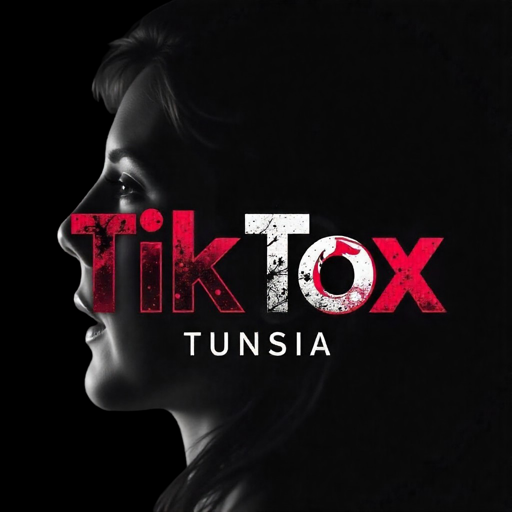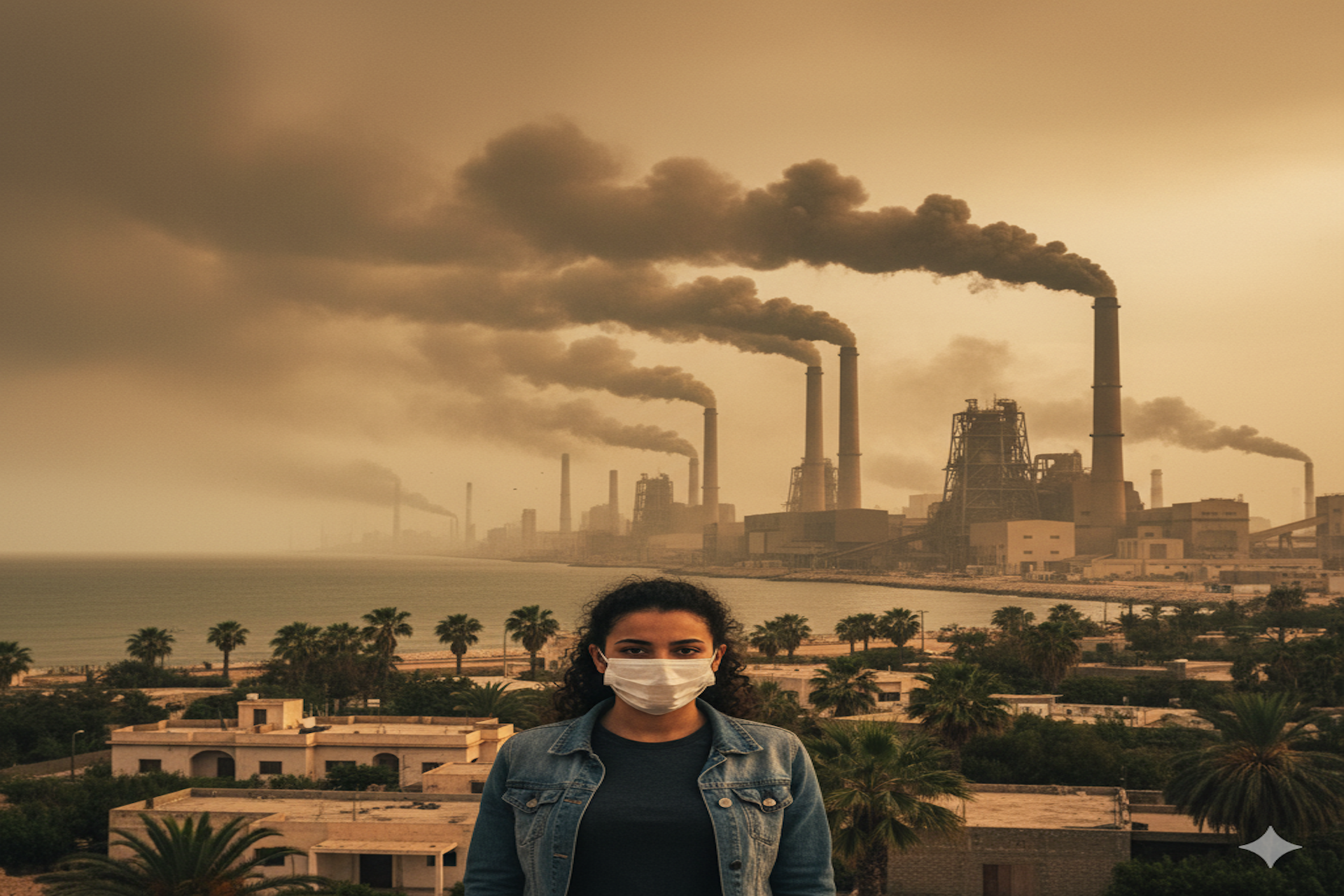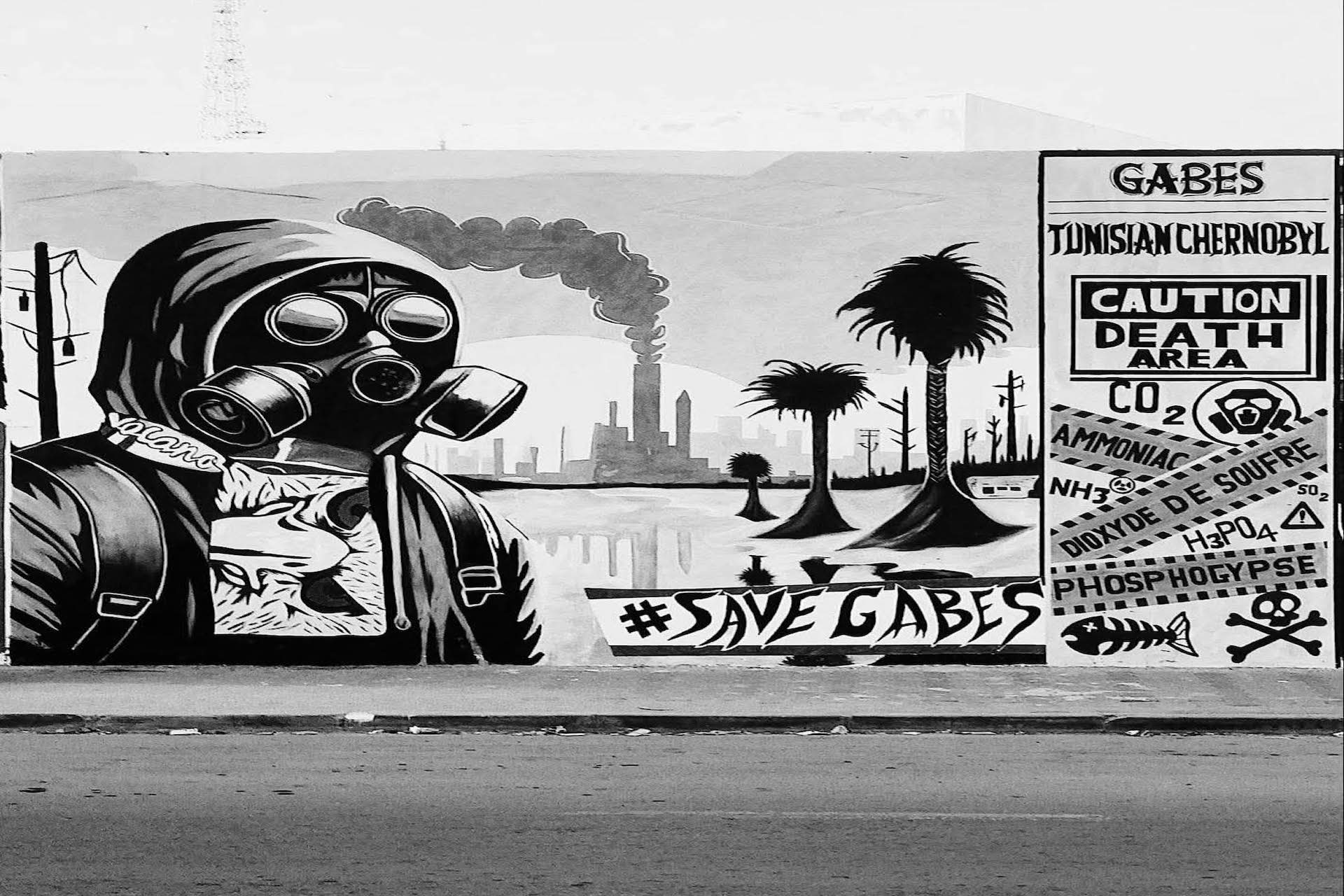Introduction
For decades, the coastal city of Gabès in southern Tunisia has lived with a contradiction: a paradise of palms and sea that also hosts one of North Africa’s largest industrial zones. In recent months the contradiction has become a crisis. Hospitals have reported hundreds of cases of respiratory distress, and a city-wide strike in October 2025 drew global attention to what local people call “the right to breathe.” [Reuters]
A City on Strike
On October 21 2025, nearly every shop and school in Gabès closed as the Tunisian General Labour Union (UGTT) led a general strike over pollution. “We can no longer live like this,” said a union representative quoted by Al Jazeera. “Every family has someone who is sick.” Demonstrators carried banners reading Gabès Wants to Live while police sealed roads around the Tunisian Chemical Group (TCG) complex.
According to Le Monde, the strike followed weeks of hospitalizations — more than 200 people, many of them children, were treated for gas inhalation after strong odours spread from the plant area.
The Toxic Legacy of Phosphates
Phosphate mining and processing have powered Tunisia’s economy since the 1970s. The Gabès complex converts raw phosphate into fertilizer but also produces phosphogypsum, a waste rich in heavy metals and naturally radioactive elements.
An internal audit cited by Reuters in July 2025 found that 14 000 – 15 000 tons of phosphogypsum were being dumped into the sea every day, creating a gray slick visible from the air.
“The plant has poisoned everything — the trees, the sea, the people,” a long-time resident told Reuters. Local fishermen report dead zones where sea grass once grew and fish no longer breed.
Health Crisis on the Ground
Doctors at Gabès Regional Hospital told reporters that cases of asthma and chronic bronchitis have increased sharply over the past decade. A pediatrician interviewed by France 24 described children arriving “with burning eyes and coughing fits after each release of fumes.”
Residents complain of a sharp, acidic smell. Some wear masks even indoors. “It feels like breathing bleach,” said a teacher living two kilometers from the factory.
Environmental researcher Hatem Ben Salem explained that the fine dust emitted from fertilizer drying units can contain fluorides and sulfur compounds capable of damaging lung tissue. “Continuous exposure, even at low levels, becomes cumulative,” he said.
Government Response and Challenges
President Kais Saied has acknowledged the problem, calling the situation an “environmental assassination.” [Le Monde]
However, the government’s practical response has focused on announcing studies and committees rather than immediate remediation. Officials say the phosphate sector remains “a vital pillar of national revenue” and must be reformed carefully.
A government statement reported by Al Jazeera promised a new cancer hospital in Gabès, but without a clear timeline for reducing emissions. For many citizens, this reinforced perceptions of delay. “We need prevention, not just treatment,” said one activist during the strike.
Scientific Evidence and Environmental Impact
Independent Tunisian scientists have measured high concentrations of heavy metals and phosphates in coastal sediments. Marine biologists warn that local ecosystems are collapsing. A 2024 study from the University of Sfax found traces of cadmium and uranium in shellfish samples near the discharge site.
The combination of air pollutants and water contamination, experts say, represents one of the gravest environmental burdens in North Africa.
Social and Economic Dimensions
Gabès depends on the chemical industry for employment, yet many workers fear for their health. “We earn our living by losing our lives,” said a mechanic interviewed by Reuters.
Unemployment in the region remains above 25 percent, pushing some residents to accept unsafe conditions. Economists argue that Tunisia needs investment in clean technology and diversified industries to end the dependency cycle.
Civil and International Reactions
Local NGOs such as Stop Pollution have documented air-quality violations for years. International groups — including Human Rights Watch and Greenpeace MENA — have called the crisis a “violation of the right to a healthy environment.”
The European Union and United Nations Environment Programme have previously funded monitoring projects in Tunisia. Observers now urge both partners to expand technical and financial support for waste management and environmental health.
“Tunisia cannot carry this burden alone,” said an EU environmental attaché quoted by France 24. “The Mediterranean is shared water.”
Looking Forward
Experts propose immediate steps:
- covering phosphogypsum piles to reduce dust;
- installing continuous emission monitors;
- developing a long-term transition plan toward cleaner production;
- and establishing a transparent health registry for affected residents.
Dr. Aïcha Larbi, an environmental-health specialist, summarized the task: “Transparency is the first treatment. Once data are public, solutions follow.”
Conclusion — The Right to Breathe
Gabès stands as a warning and a possibility. Its struggle reveals how economic dependence can silence health concerns, but also how civic mobilization can reopen debate.
The crisis is not only Tunisian; it is Mediterranean, global, human.
As the pediatric ward fills and the sea turns gray, one message echoes through the streets and the world’s headlines: the right to breathe should never be negotiable.
Economic Weight and Environmental Cost
For more than fifty years the phosphate industry has been a cornerstone of Tunisia’s exports. The Gafsa Phosphate Company (CPG) and its downstream operations in Gabès have provided fertilizer for markets in Europe and Asia. Yet analysts note that the sector’s profitability has declined even as environmental damage has risen.
Economist Samir Cherif explained in an interview with France 24 that the country’s heavy reliance on raw-material exports “traps local communities in low-value, high-pollution production.” The government, he said, must “invest in clean technology if it wants long-term growth and social peace.”
A 2025 report by the National Institute of Statistics estimated that losses linked to pollution-related health problems and degraded farmland amount to nearly 2 percent of Tunisia’s GDP each year. Farmers around Gabès say citrus and olive yields have fallen by almost one-third over the past decade.
Voices from the Ground
In the working-class neighborhood of Ghannouch, families hang wet sheets at windows to block the fumes. “We keep the children indoors most evenings,” said Mariem, a mother of three quoted by Al Jazeera. “It’s not life; it’s survival.”
Young people describe a sense of abandonment. “When you speak about pollution, they say you are political,” 19-year-old student Ahmed told reporters. “We only want clean air.”
Teachers report that absences rise after heavy emission days. A local school director said, “You can smell the chemicals even in the classroom. Students complain of headaches.”
Science and Accountability
Environmental scientists from the University of Gabès have been sampling air and water since 2018. Their most recent findings, presented at a national conference in Sfax, detected fluoride and sulfate levels several times above World Health Organization guidelines within a five-kilometer radius of the plant.
The researchers emphasized that systematic, government-backed monitoring is still missing. “We have the data, but no policy framework,” one scientist told Le Monde. “Pollution is measurable. What is lacking is enforcement.”
Independent laboratories working with the Ministry of Environment have started pilot projects to reuse phosphogypsum in construction materials — a potential way to reduce waste — but engineers caution that such technologies require strict radiation control.
Legal and Policy Efforts
Tunisia’s 2014 Constitution recognizes the right to a healthy environment. Environmental lawyer Asma Khaled said that this article “creates a duty for the state to prevent harm, not only to compensate after damage.” Several civil-society organizations have submitted complaints to administrative courts, demanding disclosure of emission records and impact assessments.
The government has responded by promising to update environmental-protection laws and align them with European Union standards under the Association Agreement. Implementation, however, remains slow.
International Cooperation
Global partners are beginning to take notice. The European Union’s Delegation in Tunis confirmed to Reuters that it is funding an €8 million program for industrial-waste management. The World Health Organization has offered technical assistance on epidemiological monitoring.
A representative from the UN Environment Programme (UNEP) told France 24 that Gabès is “a priority hotspot in the Mediterranean Action Plan.” International agencies, he added, are ready to provide expertise once national data become fully accessible.
Regional collaboration may also play a role. Algeria and Morocco face similar challenges with phosphate by-products. Scientists from all three countries met in Rabat earlier this year to discuss shared monitoring protocols.
Education and Youth Initiatives
Despite the difficulties, local universities and NGOs are building awareness. Students from the Higher Institute of Environmental Sciences of Gabès organize clean-up campaigns and citizen-science projects that track air quality using low-cost sensors.
Their coordinator, professor Rim Ouertani, said: “When young people participate in measurement, they transform frustration into knowledge. That’s how accountability begins.”
Social media has amplified these efforts. Hashtags like #RightToBreathe and #CleanGabes circulate on TikTok and Instagram, blending art, data, and community storytelling.
Regional Inequality and Governance
Experts see the crisis as part of a broader imbalance between coastal development and interior neglect. Political scientist Nizar Ayadi told Le Monde that “Gabès exposes how environmental injustice overlaps with social inequality. Communities far from the capital often bear the external costs of industrial growth.”
Decentralization reforms launched in 2018 were intended to give local councils more authority over environmental policy, but many positions remain vacant or under-funded. Without administrative capacity, enforcement stays theoretical.
Resilience and Possible Futures
Some small businesses are experimenting with eco-tourism and organic farming on land reclaimed from contaminated zones. The NGO Green South Tunisia trains farmers in soil-remediation techniques using natural absorbents like algae and clay.
Environmental economist Amira Feki suggests that a “just transition” for Gabès would combine industrial modernization with social protection. “The objective is not to close factories overnight,” she said, “but to ensure that economic recovery does not sacrifice health and ecosystems.”
International donors are exploring financing tools that tie loans to environmental performance. The Ministry of Finance has begun consultations on issuing green bonds to support waste-water treatment and renewable-energy projects in the region.
Public Awareness and Media Role
Independent Tunisian media outlets continue to report on the situation despite limited resources. Environmental journalist Henda Belhaj told France 24 that covering pollution stories “used to be a niche topic, but now it’s mainstream.”
She credits citizen videos shared on social platforms for forcing national broadcasters to address the issue. “When people film yellow smoke above their houses, denial is no longer possible,” she said.
International press coverage — from Reuters to Le Monde — has drawn attention to the resilience of local civil society rather than only to crisis imagery. Analysts say this external visibility can attract both scrutiny and support.
Steps Toward Recovery
Experts outline several priority measures that could reduce immediate harm:
- Real-time air monitoring with data accessible online.
- Emergency medical response training for schools and local clinics.
- Gradual relocation or modernization of the most polluting units.
- Restoration programs for the coastal lagoon and fisheries.
- Public participation in environmental decision-making.
Such steps, though technical, signal respect for human dignity and align with Tunisia’s international obligations under the Paris Agreement and the Barcelona Convention for Mediterranean protection.
A Shared Responsibility
Gabès’s struggle is not isolated. Industrial zones from Alexandria to Marseille face similar legacies of unregulated growth. The difference lies in transparency and accountability.
“The Mediterranean connects us through water and wind,” said a marine biologist from Sfax University. “Pollution anywhere along its shores eventually reaches everyone.”
International observers argue that addressing Gabès’s crisis offers a chance for Tunisia to lead in sustainable transition for the region.
Conclusion — From Awareness to Action
The story of Gabès is no longer only about contamination; it is about recognition. Recognition that prosperity built on neglect cannot last, that environmental health is inseparable from human rights, and that protecting one coastal city protects an entire sea.
As policymakers debate reforms and scientists collect data, the people of Gabès continue their daily endurance — tending gardens under gray skies, teaching classes through the smell of sulfur, documenting what they breathe.
Their message, carried through union banners and classroom experiments alike, remains simple and universal: the right to breathe clean air is the foundation of every other right.













